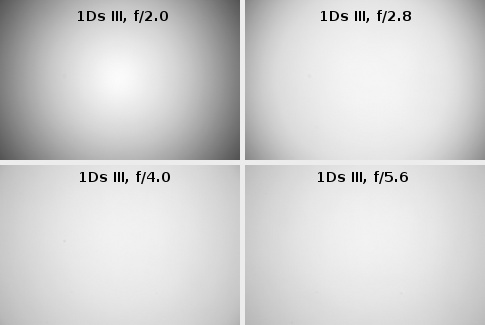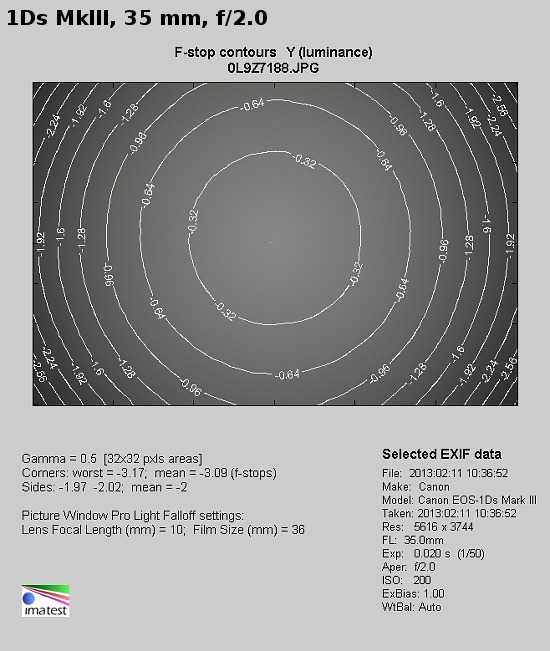Canon EF 35 mm f/2 IS USM
8. Vignetting

The measurements don’t show anything worrisome. At the maximum relative aperture the light fall-off in the frame corners amounts to 28% (-0.93 EV) which we consider a medium value. The problem disappears almost completely on stopping down to f/2.8 where the vignetting level decreases to 9% (-0.27 EV).
Please Support UsIf you enjoy our reviews and articles, and you want us to continue our work please, support our website by donating through PayPal. The funds are going to be used for paying our editorial team, renting servers, and equipping our testing studio; only that way we will be able to continue providing you interesting content for free. |
- - - - - - - - - - - - - - - - - - - - - - - - - - - - - - - - - - - - - - - - - - - - - - - -
Much more problems you can find on full frame and the photos, presented below, show it clearly.

Using the maximum relative aperture means you lose 66% of light (-3.09 EV) in the frame corners. It is really a lot so this result can be only described as weak. Some 1.4/35 lenses can lose less light by f/1.4 not to mention their performance by f/2.0. On stopping down to f/2.8 the Canon 2/35 IS shows 44% of vignetting (-1.67 EV). By f/4.0 the problem is still perceivable, amounting to 25% (-0.83 EV). Further stopping down doesn’t influence this aberration much – both on f/5.6 and on f/8.0 we got the same result – 22% (-0.74 EV).
 |






